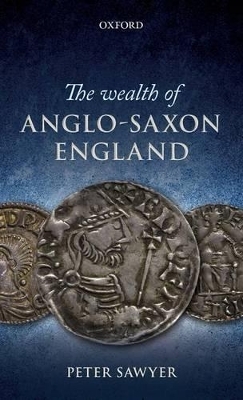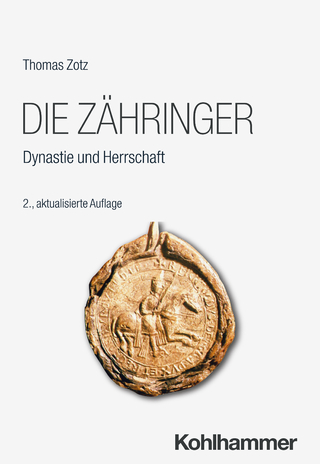
The Wealth of Anglo-Saxon England
Seiten
2013
Oxford University Press (Verlag)
978-0-19-925393-7 (ISBN)
Oxford University Press (Verlag)
978-0-19-925393-7 (ISBN)
An account of the ways wealth was accumulated and the forms it took in Anglo-Saxon England, with emphasis on recent developments in the study of Anglo-Saxon coins and Domesday Book, and some of their surprising results.
How did the Anglo-Saxons obtain the treasure that tempted Vikings to raid England frequently in the ninth century and again between 980 and 1018? As Britain then had no gold mine and its lead mines yielded very little silver, this treasure must have been imported. Some may have been given, but most was obtained by trade. Until the ninth century the main source was Francia where there was a lively demand for English produce. Cross Channel trade flourished, much of it passing through the major ports, or wics, that developed in the seventh century. The rapid decline of this trade in the ninth century was caused, not by the Vikings, but by a general shortage of new silver in western Europe after c. 850, reflected in the debasement of the Frankish and Anglo-Saxon coinages. Silver was, however, imported to England by the Danes who settled there in the late ninth century. A very important source of new silver was discovered in the 960s in Germany. This led to a rapid expansion of the German economy that created a demand for raw materials and food from England. Very soon England's towns expanded and its trade, internal and external, grew. Its new wealth attracted Vikings, but trade continued and, although they extracted a great deal of silver, new supplies from Germany enabled the English to maintain their currency. Recent studies have shown that it grew to a peak under Edward the Confessor. This confirms the evidence of Domesday Book that on the eve of the Norman Conquest England was a very rich, highly urbanized, kingdom with a large, well-controlled coinage of high quality. This coinage, and Domesday Book itself, are indeed good evidence that English government was then remarkably effective.
Peter Sawyer offers an account of the ways wealth was accumulated and the forms it took in Anglo-Saxon England, with emphasis on recent developments in the study of Anglo-Saxon coins and Domesday Book, and some of their surprising results.
How did the Anglo-Saxons obtain the treasure that tempted Vikings to raid England frequently in the ninth century and again between 980 and 1018? As Britain then had no gold mine and its lead mines yielded very little silver, this treasure must have been imported. Some may have been given, but most was obtained by trade. Until the ninth century the main source was Francia where there was a lively demand for English produce. Cross Channel trade flourished, much of it passing through the major ports, or wics, that developed in the seventh century. The rapid decline of this trade in the ninth century was caused, not by the Vikings, but by a general shortage of new silver in western Europe after c. 850, reflected in the debasement of the Frankish and Anglo-Saxon coinages. Silver was, however, imported to England by the Danes who settled there in the late ninth century. A very important source of new silver was discovered in the 960s in Germany. This led to a rapid expansion of the German economy that created a demand for raw materials and food from England. Very soon England's towns expanded and its trade, internal and external, grew. Its new wealth attracted Vikings, but trade continued and, although they extracted a great deal of silver, new supplies from Germany enabled the English to maintain their currency. Recent studies have shown that it grew to a peak under Edward the Confessor. This confirms the evidence of Domesday Book that on the eve of the Norman Conquest England was a very rich, highly urbanized, kingdom with a large, well-controlled coinage of high quality. This coinage, and Domesday Book itself, are indeed good evidence that English government was then remarkably effective.
Peter Sawyer offers an account of the ways wealth was accumulated and the forms it took in Anglo-Saxon England, with emphasis on recent developments in the study of Anglo-Saxon coins and Domesday Book, and some of their surprising results.
Peter Sawyer has taught at the universities of Edinburgh, Birmingham, Leeds, Gothenburg, Minnesota, and California-Berkeley. He was Professor of Medieval History at Leeds University from1970 till 1982, and took early retirement to live in Sweden and devote more time to early Scandinavian history. He was awarded an Honorary DPhil. from the University of Copenhagen in 2005.
Preface ; 1. Introduction ; 2. Tempore Regis Edwardi ; 3. From solidi to sceattas ; 4. The Eighth and Ninth Centuries ; 5. From Edward the Elder to Edward the Confessor ; 6. 'Whoever has cash can acquire anything he wants' ; Appendix: Estimating dies, coins, and currency ; References
| Erscheint lt. Verlag | 21.2.2013 |
|---|---|
| Zusatzinfo | 12 black and white illustrations |
| Verlagsort | Oxford |
| Sprache | englisch |
| Maße | 147 x 222 mm |
| Gewicht | 334 g |
| Themenwelt | Sachbuch/Ratgeber ► Freizeit / Hobby ► Sammeln / Sammlerkataloge |
| Geschichte ► Allgemeine Geschichte ► Mittelalter | |
| Geisteswissenschaften ► Geschichte ► Regional- / Ländergeschichte | |
| Geschichte ► Teilgebiete der Geschichte ► Kulturgeschichte | |
| ISBN-10 | 0-19-925393-5 / 0199253935 |
| ISBN-13 | 978-0-19-925393-7 / 9780199253937 |
| Zustand | Neuware |
| Haben Sie eine Frage zum Produkt? |
Mehr entdecken
aus dem Bereich
aus dem Bereich
eine neue Geschichte des Mittelalters
Buch | Hardcover (2023)
C.H.Beck (Verlag)
38,00 €


